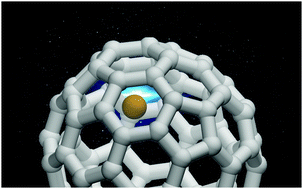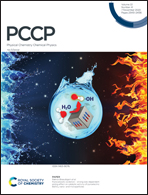Th@C86, Th@C82, Th@C80, and Th@C76: role of thorium encapsulation in determining spherical aromatic and bonding properties on medium-sized endohedral metallofullerenes†
Abstract
Thorium encapsulated metallofullerenes (Th-EMFs) with external C76, C80, C82, and C86 cages have been synthesized, with the 13C-NMR spectrum recorded for Th@C82. Here, we explore computationally the chemical bonding, NMR and spherical aromaticity of Th@C82 and related thorium-encapsulated metallofullerenes. Our results show that these Th-EMFs are new examples of spherical aromatic structures, representing interesting low-symmetry exceptions to the Hirsch 2(N + 1)2 rule of spherical aromaticity. Their electronic structures are based on π-electron counts of 80, 84, 86, and 90, respectively, with a shell structure ranging from S2P6D10F14G18H22I8 to S2P6D10F14G18H22I18, where the partially filled I-shell remains as a frontier orbital. Their behavior is comparable to that of the spherical aromatic alkali-C606− phases, which in addition to the favorable endohedral Th-fullerene bonding account for their particular abundance exhibiting the ability to sustain a long-range shielding cone as a result of the favorable metal–cage bonding. This rationalization of such species as neutral spherical aromatic EMFs suggests the possibility of an extensive series of aromatic fullerenes with nuclearity larger than C60 buckminsterfullerene as stable building blocks towards nanostructured metal–organic materials.



 Please wait while we load your content...
Please wait while we load your content...